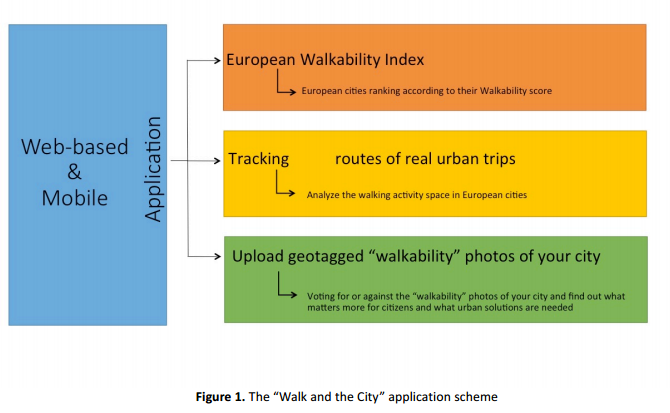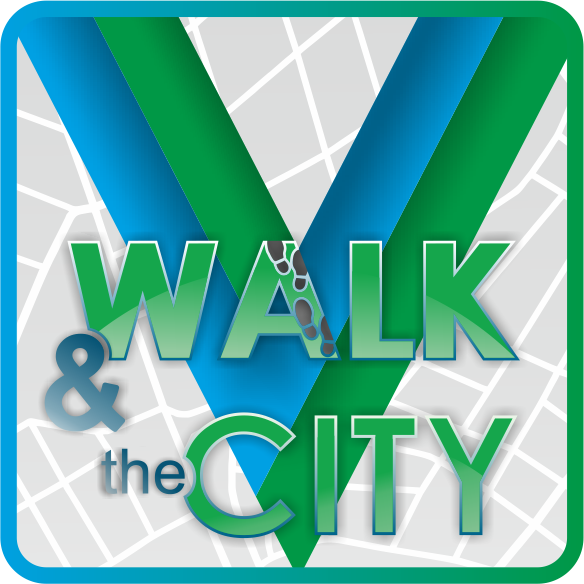Have you ever wondered about the degree of car-dependency in your neighborhood, your community and your city? In other words, exactly how “walkable” major European cities are? Have you ever had the chance to evaluate yourself the built environment characteristics of your city or other cities around Europe? These are critical contemporary questions which will be answered through the EU funded “Walk & the City” mobile application and web-platform in a quantitative and geographical manner.
The “Walk & the City” mobile application was developed to make citizens urban evaluators of the built environment they are interested for. They have the opportunity to say publicly and anonymously their point of view about their walking routes. Urban citizens or even tourists are able to pinpoint the problematic and the dynamic characteristics of the built environment they face in their reality.
The “Walk & the City” website is predominantly a geographical platform for the pedestrians and their cities. The website presents a European objectively measured walkability index which is entirely based on open data. The results of this measure range from 0 to 100, with 100 indicating a very pedestrian-friendly walking environment in which residents are able to do the majority of their daily errands on foot and 0 representing a car-dependent area which is easily accessible mostly by car. Additionally, users of the website are able to search, view, comment and have access on the crowd-sourced data collected via our mobile application.
To that end, “Walk & the City” app records the subjective but real walking experience of people in cities and on the other hand the “Walk & the city” website is basically used to inform people about the objectively measured walkability level of their cities. Combing the aforementioned characteristics, “Walk & the city” is an interactive scientific & citizen-based platform aiming to contribute with significant geographical information the urban mobility policy making process in Europe. In this way, the planning and delivering tasks of a more livable, healthy and sustainable urban environment to live in could be easier and more successful.

Why walkability matters more than ever before?
Nowadays, walking matters more than ever before in the fields of urban planning and public health management. This is due to the extensive car-dependent lifestyles many European citizens have chosen to embrace and maintain with increasing frequency. Car commuting is detrimental to the environment as well as the daily quality of life for the city citizens. Extensive commuting contributes, among others, to negative climate change issues, pollution through emissions, heavy dependency on the crude oil markets, increased noise and vibration levels in the streets, and a sedentary lifestyle. In turn, this results in obese populations with multiple health issues, expensive medical care and consequently higher death rates and a grim forecast for the future.
Obviously, sustainable and health promoting modes of transportation, such as walking and bicycling, are a priority in the urban mobility planning agenda of many major European cities. Such modes of transportation can successfully mitigate the majority of the aforementioned issues and challenges. Traveling through walking is a universally accepted, self-sufficient and environmentally friendly mode of transportation. The majority of researchers and practitioners have established significant associations between walking and being physically active with the buildings construction attributes. The mixed-use development entailing street network connectivity, residential density and proximity to public transport are some of the major factors of the urban built environment which affect walking behavior.
Within this framework the concept of “walkability” is significant for both urban transport planners and public health practitioners.
Therefore, walkability is a composite quantitative index of the built environment and combines neighborhood design attributes likely to reflect how conducive a location is to walking.
 WALK & the CITY
WALK & the CITY